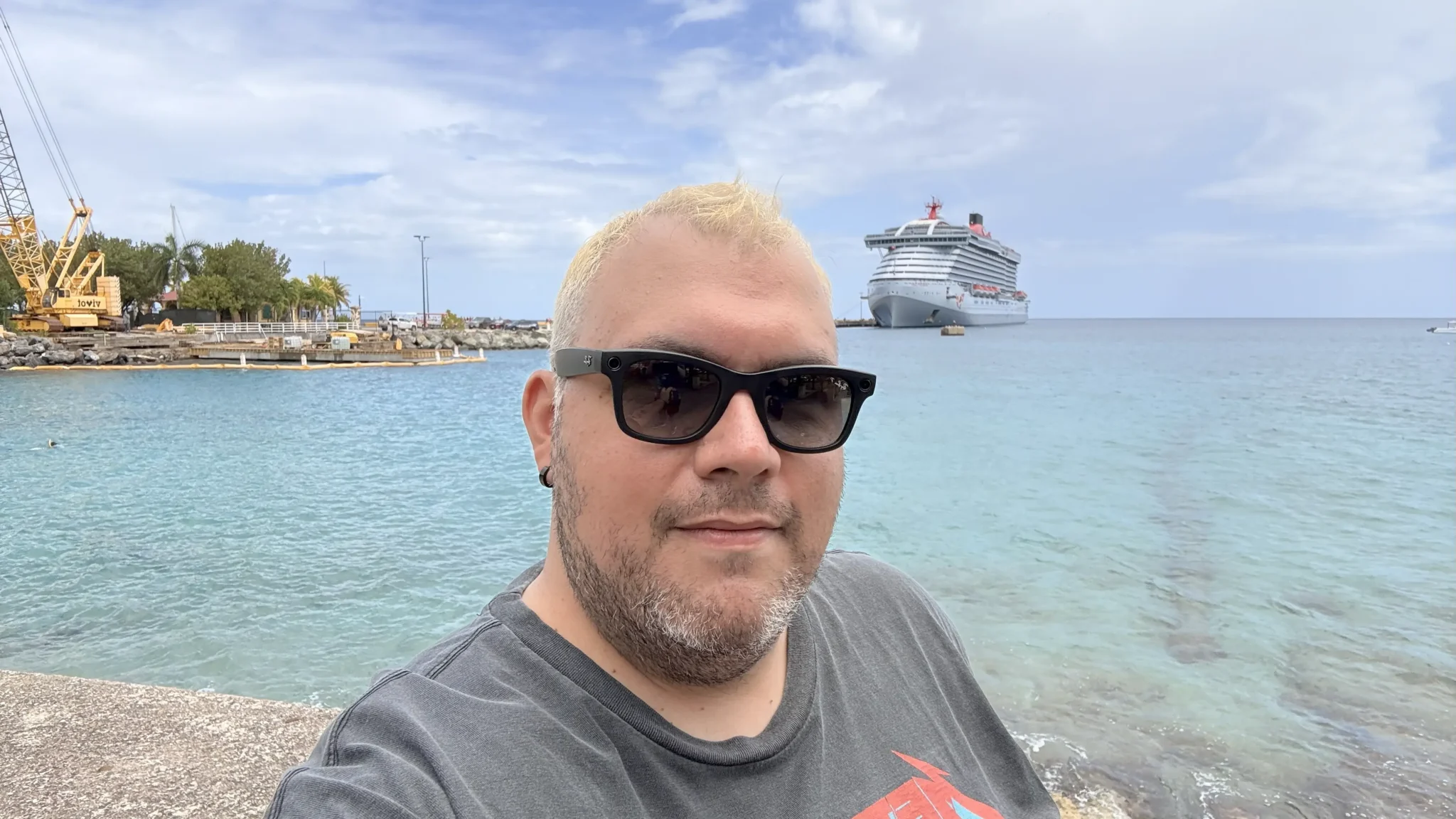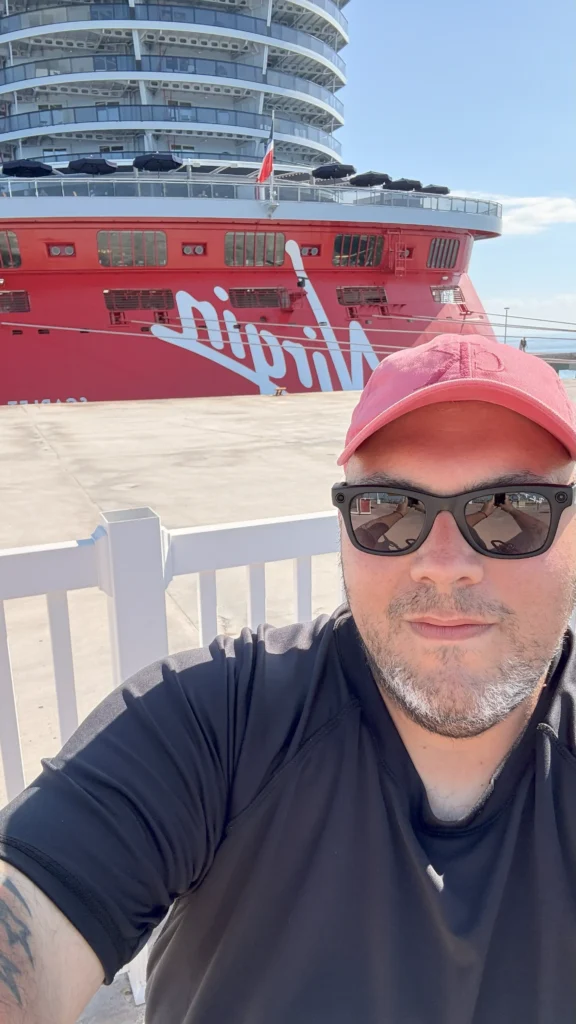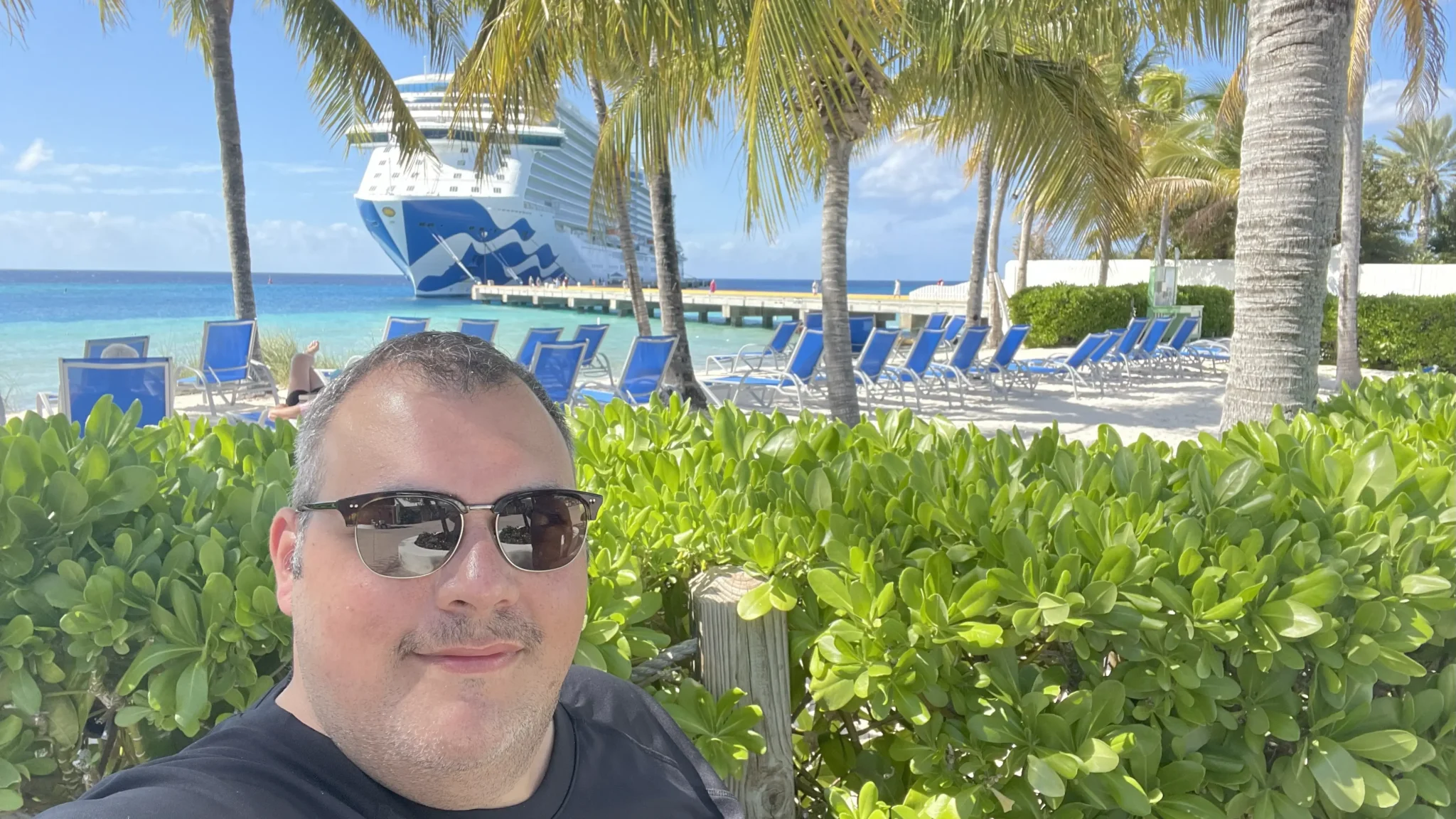By Matthew Medeiros

Listen to this Article
When Matthew Medeiros wheels onto a ship, he isn’t looking for champagne or chandeliers first. He’s scanning for ramps, lifts, and the little design choices that tell him the cruise line didn’t tack accessibility on as an afterthought.
“Cruising sets a high bar for accessibility,” he says. “It’s one of the few travel sectors where I consistently feel like the culture is shifting from compliance to care.”
Leaders on the water
Matthew names cruise lines that consistently rise above. Royal Caribbean has his heart for its comprehensive program supporting autistic travellers. “It’s detailed, thoughtful, and staff are actually trained to deliver on it,” he explains. Princess, Celebrity, and Norwegian all earn his trust for quick, clear responses from their accessibility teams.
And then there’s Virgin Voyages, his new favorite. “That Scarlet Lady blew me away,” he says. Decks linked seamlessly, without waiting for someone to unlock a lift. Scarlet Night saw a 92-year-old with a walker and a young adult dancing side by side. “No one asked who belonged where,” Matthew recalls. “Community just happened.”

What travellers should ask
Matthew advises clients—and fellow travellers with mobility or hidden disabilities—not to settle for vague answers. “Specs beat adjectives every time,” he insists. Before booking, request:
- Cabin schematics, including door widths and bathroom layouts
- Tender policies (many itineraries rely on small boats to reach shore)
- Pool lift availability and theatre seating plans
- Exact elevator counts and routes across decks
He suggests contacting a line’s accessibility desk directly and requesting everything in writing. “A PDF is worth ten ‘don’t worry, we’ve got it.’”
Onshore realities
Cruises can be models of inclusion, but ports can undo that progress in a heartbeat. Matthew urges travellers to vet shore excursions carefully:
- Ask for terrain notes . . . cobblestones, steps, steep inclines
- Confirm accessible restrooms at tour stops
- Check whether operators use portable ramps where needed
“A ship may be flawless,” he says, “but if the gangway leads to chaos, your day falls apart.”
A community at sea
What strikes Matthew most is how cruising can result in a feeling of belonging. “You’ll see a kid with autism, an elder with a cane, a couple in their twenties, all enjoying the same deck party,” he says. “That’s the kind of magic travel should always deliver.”
He believes cruise lines that embrace accessibility earn something far greater than loyalty. They earn advocates. “We tell stories about our experiences,” he explains. “We share what worked. When you get it right, you build trust which translates into more bookings.” For him, accessibility done right opens the door to something priceless: the freedom to focus on joy instead of obstacles.

